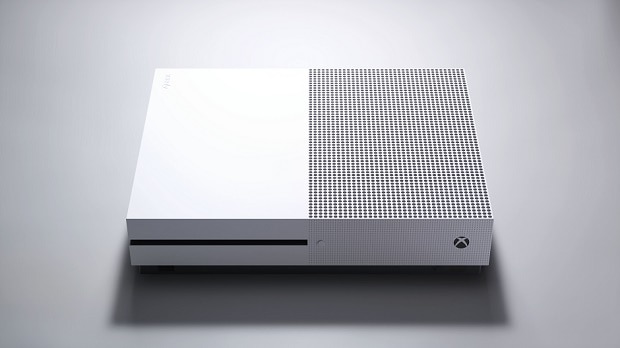Microsoft’s Xbox One S gaming console is now officially available in a $399 2TB launch edition, nearly two months after the company first unveiled it during its E3 2016 press conference in June. While the new console improves the previous model in almost every way, we didn’t know all the details about its hardware components. However, Microsoft’s senior director of product marketing and planning Albert Penello just gave an interview to Eurogamer and his detailed answers may finally satisfy your curiosity (via Windows Central). We have selected the most interesting bits from the interview below.
The Xbox One S SoC
The new Xbox One SoC is fabricated at TSMC and uses its 16nm Fin FET process, allowing for more power efficiency:
The SoC in the Xbox One S is designed in the 16nm Fin FET process, which results in a die that is 240mm2; 33 per cent smaller and consumes less power than the 28nm SoC in the original Xbox One. for the Xbox One S consoles shipping this year the SoC is fabricated at TSMC.
Reducing the power consumption of the SoC opened up opportunities to reduce the size of the chassis significantly. We designed the console to make sure it had great acoustic performance and reliability for the consumer. The cooling solution uses an aluminum heat sink with two heat pipes and a single 120mm axial fan to draw air through the whole system.
Additionally, the new SoC has kept the same design from its predecessor, though the GPU frequency has slightly increased to enable HDR support. However, this additional power won’t make much a difference on non-HDR Xbox One games:
The SoC in Xbox One is the same design as the previous processor. Same GPU, same number of CUs, same memory, same CPU. As we discussed, we did make some refinements for 4K support and to fit in the new chassis. We also used this opportunity to increase the GPU frequency from 853 MHz to 914 MHz. By making this change, developers creating HDR titles do not have to incur any performance hit. We also decided to make the extra six per cent available to all titles. So some games (ones that utilize dynamic resolution and/or unlocked framerates) may see a very minor performance improvement. Our testing internally has shown this to be pretty minor, and is only measurable on certain games, so we didn’t want to make it a “selling point” for the new console.

HDR Support
As we previously reported, the Xbox One S will only support the HDR 10 standard which has been embraced by Sony and Samsung:
HDR10 is the standard HDR format for the UHD Blu-ray spec, and our understanding is that the majority of consumer TV sets will support HDR10, with Dolby Vision as an option. Dolby Vision looks to be a great technology and we have discussions with Dolby often.
Furthermore, if you had concerns about an upcoming fragmentation between HDR and non-HDR Xbox One games, Penello explained that developers are actually allowed to release HDR patches to their existing games:
This is totally up to the developers. Having an HDR TV set myself, I would love to see this happen but it’s not something we require.
4K video support
New hardware on the Xbox One S will enable support for 4K video streaming from Netflix and other video streaming services:
There are several components required to support the 4K UHD video playback that result in a combination of changes in the new console. First, we added a 4K HEVC decoder to the SoC to render the compressed video streams efficiently in hardware. Next, we updated the video output to HDMI 2.0 and HDCP 2.2. The interface revisions are all integrated into the SoC and enable outputting video at the higher bandwidths required for 4K UHD and HDR formats, as well as the copy protection tech required for protected content.
Lastly, the Xbox One S features a brand new Blu-ray UHD DVD drive, and Penello also explained that it’s not possible to enable support for 4K Blu-ray DVDs on the original Xbox One via a firmware update.
I have seen people online believe that you can do a ‘firmware’ upgrade to our existing BD drive to support 4K, but that’s not true. In addition to DSP firmware updates, the drive in the Xbox One S also includes a new optical pickup to support three-layer UHD Blu-ray format discs. Plus HDMI 2.0 video output with HDCP 2.2 copy protection is also a BD-UHD certification requirement, both of which are included in Xbox One S and weren’t implemented on the other Xbox One consoles.
We invite you to read Penello’s full interview on Eurogamer, and the Xbox team also just published an helpful article to answer all your questions about 4K, HDR and TV setups. Let us know what do you think of the Xbox One S hardware components by dropping us a comment below.


